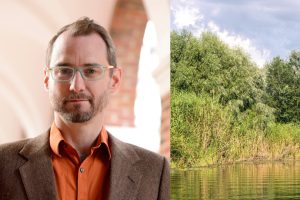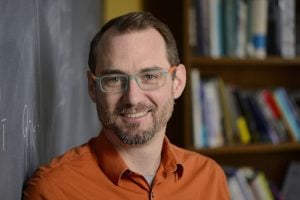Ciaran Harman, an associate professor of landscape hydrology and the Russell Croft Faculty Scholar in the Department of Environmental Health and Engineering, studies how the structure of landscapes controls the movement of water from rainfall to streams, and how that structure evolves over time.
Harman’s research focuses on fundamental gaps that inhibit reliable predictions of streamflow quantity and quality in headwater catchments. He combines theory, experiments, modeling, fieldwork, and data analysis to understand flow and transport across hydrologic scales and their links to the co-evolution of landscape structure.
The insights that have emerged from Harman’s work have helped establish the theory of storage selection functions for lumped transport modeling. He currently directs the Landscape Hydrology Lab, which aims to address fundamental challenges in hydrologic science and the emerging interdisciplinary field of critical zone science. His lab investigates how water, solutes, and sediments move through the landscape and translate that understanding into mechanistic insights and predictive models. Harman’s group also studies how the hydrology of specific landscapes might have co-evolved with other ecological, geomorphic, and geochemical processes operating concurrently over their histories.
He is a member of the European Geosciences Union, American Geophysical Union, Geologic Society of America, and International Association of Hydrologic Sciences. His awards include an NSF Career Award (2017), an Early Career Award from the American Geophysical Union (2016), and an Editors Citation for Excellence in Refereeing for Geophysical Research Letters (2015).
Harman received undergraduate degrees in arts and engineering with first-class honors from the University of Western Australia in 2003. He went on to receive a master’s degree in geography and a PhD in civil engineering from the University of Illinois at Urbana-Champaign in 2011. He completed postdoctoral research at the University of Arizona, Tucson, before joining the Johns Hopkins faculty in 2012. He currently has a joint appointment in the departments of Environmental Health and Engineering and Earth and Planetary Sciences.


